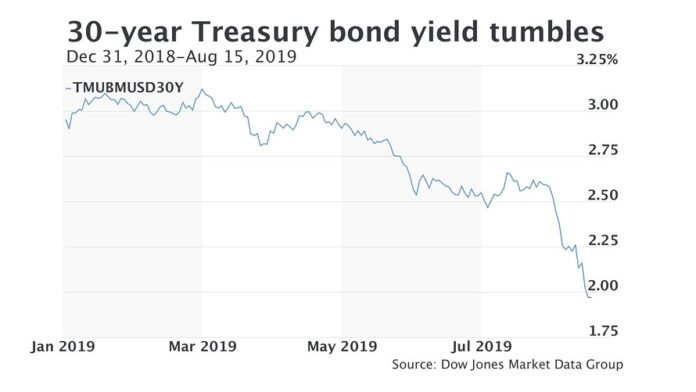Buckle up, folks—the 30-year Treasury yield is making headlines, and it’s not just another number on a financial chart. As of May 19, 2025, this key metric has spiked above 5%, a level not seen in nearly two decades, following a bombshell downgrade of the U.S. credit rating by Moody’s. This surge is shaking up markets, rattling investors, and raising eyebrows across the globe. Why does this matter? The 30-year Treasury yield is like the pulse of the bond market, influencing everything from mortgage rates to corporate borrowing costs. Let’s dive into the latest twists and turns of this financial saga, unpack what’s driving the chaos, and explore what it means for you.
Why the 30-Year Treasury Yield Is Soaring
Moody’s dropped a financial thunderbolt late Friday, stripping the U.S. of its top credit rating due to ballooning debt and trade war jitters. By Monday morning, the 30-year Treasury yield had jumped to 5.012%, up 12 basis points, according to CNBC. Investors, spooked by the downgrade, dumped bonds, pushing yields higher. Bloomberg reports this move signals deep concerns about the U.S.’s fiscal health, especially as trade tensions simmer. The Trump administration’s earlier tariff hikes in April had already nudged yields up, but this downgrade lit a match under the market. Posts on X echo the sentiment, with users like @rev_cap predicting yields could climb further, citing persistent inflation and deficit spending.
What’s fueling this fire? It’s a cocktail of factors. The U.S. debt pile is growing, and tariffs are stoking inflation fears. Meanwhile, the Federal Reserve’s hands are tied—trapped between recession risks and price pressures. A Reuters poll from May 13 noted that over half of bond strategists now question the safe-haven status of Treasuries, a worrying shift for a market long seen as rock-solid.
Impacts of the 30-Year Treasury Yield Surge
So, what does a 5%+ 30-year Treasury yield mean for everyday folks? Here’s a quick breakdown:
- Mortgage Rates: Yields and mortgage rates move in lockstep. Freddie Mac reports 30-year fixed mortgage rates at 6.76% as of May 9, and they’re likely to climb higher, squeezing homebuyers.
- Borrowing Costs: Businesses face pricier loans, which could slow expansion and hiring.
- Investor Confidence: Higher yields draw cash to bonds but signal economic unease, denting stock market optimism.
- Global Markets: Foreign investors, holding a record $9 trillion in Treasuries as of March (Reuters), may rethink their bets, adding volatility.
The ripple effects are real. Just last week, on May 12, a temporary U.S.-China trade deal eased tariffs, briefly calming yields. But Moody’s downgrade erased those gains, proving how fragile the market’s mood is. X users like @Barchart flagged the yield hitting 4.94% on May 13, a prelude to today’s leap.
What’s Next for the 30-Year Treasury Yield?
Peering into the crystal ball, the 30-year Treasury yield faces a bumpy road. The Fed’s May 7 meeting kept rates steady at 4.25%–4.5%, but Chair Jerome Powell warned of stagflation risks tied to tariffs. Analysts at Morningstar suggest yields could stabilize if recession fears prompt rate cuts, but JPMorgan pegs a 60% chance of economic downturn by year-end, which might paradoxically lower yields as investors flock to Treasuries for safety. Yet, if inflation persists, yields could keep climbing, especially if Congress ramps up spending.
On X, @KobeissiLetter noted the yield curve steepening to 50 basis points, hinting at shifting expectations for growth and inflation. Meanwhile, Treasury Secretary Scott Bessent, speaking on May 1, argued the bond market is screaming for rate cuts—a view not yet shared by Powell. The tug-of-war between these forces keeps investors on edge.
Navigating the Storm
This isn’t just a Wall Street story—it’s your story. Higher yields mean tougher times for borrowing, whether it’s a home loan or a small business venture. But they also signal opportunity for savvy investors eyeing bonds. The 30-year Treasury yield is a barometer of economic health, and right now, it’s flashing warning signs. Keep an eye on Fed moves, trade talks, and deficit debates; they’ll shape where yields head next. For now, the market’s on a wild ride, and we’re all along for it.
Want to stay ahead of the curve? Subscribe to our newsletter for real-time updates on the 30-year Treasury yield and other market movers. Don’t miss the next twist in this financial thriller!
